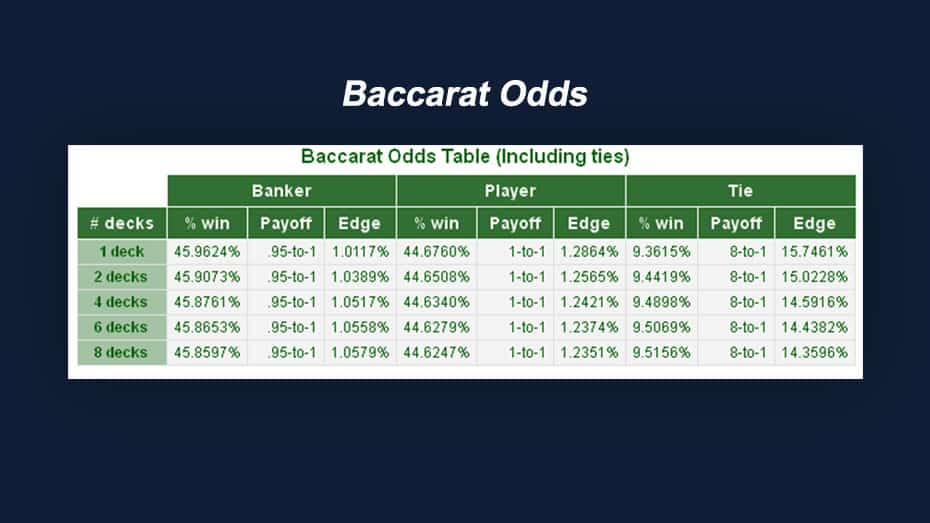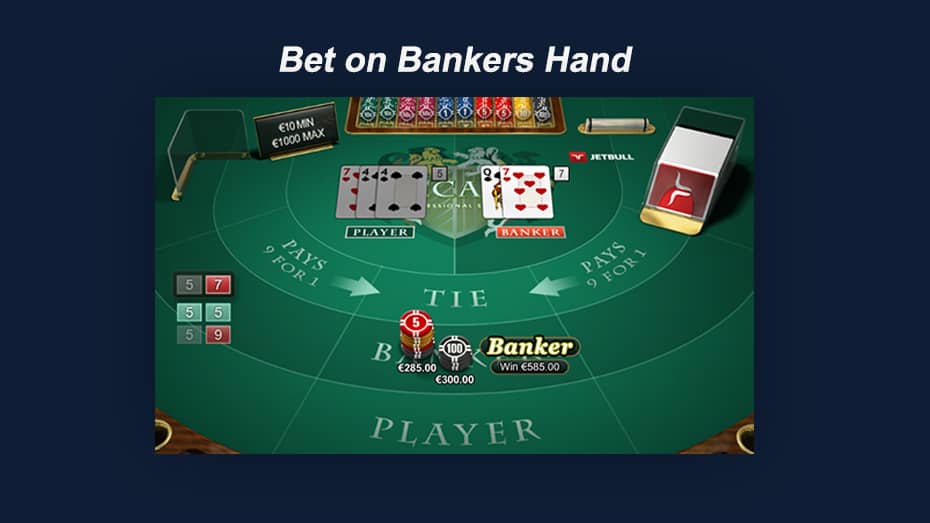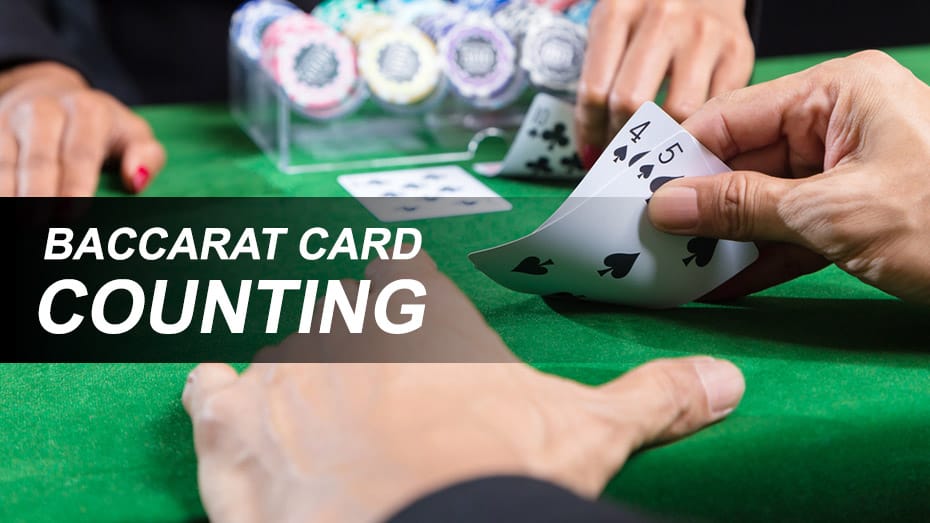Baccarat Strategy: Unveil the Secrets of Baccarat and Win Big!
Before we delve into the baccarat strategy, it’s important to understand the basic rules of Baccarat. The game is played with six to eight decks of cards and involves two hands, the player and the banker. The objective is to predict which hand will have a higher score, with the highest score being 9.

Cards from 2 to 9 are worth their face value, while aces are worth 1 and tens, and face cards are worth 0. If the total value of the cards in a hand exceeds 9, the first digit is dropped, making the score a single-digit number.
Banker or Player: The Basic Baccarat Strategy
Now that you understand the differences between Banker and Player bets, how do you choose which one to bet on?

Know the Odds
In a casino, odds are often something that doesn’t change, but specific rules and baccarat strategy might have a positive or negative impact on these figures. Before a round of baccarat starts, the player will place one of three wagers. Which are:
As you might have guessed, you’re placing a wager on the result of the match (whether one team wins or there is a tie). Both the player and the banker are dealt two cards after these bets are placed. The side with the total closest to nine wins, as was previously mentioned. It’s important to note that while some cards, such as face cards and tens, have a value of zero, aces only have a single value.

Double-digit values are not permitted in baccarat. Ten must be subtracted from totals that are ten or above, or the first digit must be eliminated.
All of the baccarat wagering options have a different house edge, odds, and payout size. We’ll go over this in more detail in later parts. The banker bet often has the best odds of winning, whereas a tie is a rather infrequent result. It is appropriate that these bets have the greatest and worst baccarat odds as well as the lowest and largest baccarat payouts, respectively.
Bet on the Banker’s Hand
In Baccarat, there are two main bets you can place: the Player’s Hand and the Banker’s Hand. The objective of the game is to bet on which hand will have a total closest to nine. Both the Player and Banker Hands are dealt two cards each, and a third card may be dealt depending on the total value of the cards. The Banker’s Hand is not the same as the casino, but rather it’s one of the two main bets that you can place.

Why Bet on the Banker Hand?
The Banker Hand is the most popular bet in Baccarat, and there’s a good reason for that. Statistically speaking, the Banker Hand has a higher chance of winning compared to the Player Hand. In fact, the Banker Hand has a win rate of 50.68%, while the Player Hand has a win rate of 49.32%. Additionally, the Banker Hand has a lower house edge compared to the Player Hand, which means that you have a better chance of winning in the long run.
Keep Track of Your Bets
There are several ways to keep track of your baccarat bets. The simplest way is to use a pen and paper and record your bets manually. You can also use a baccarat scorecard, which is a printed sheet that allows you to mark the outcomes of each hand. Another option is to use a baccarat tracking app, which can help you analyze your betting patterns and provide insights into your performance.

Manage Your Bankroll
Baccarat can be a fast-paced game, and it’s easy to get caught up in the excitement and bet more than you can afford to lose.
Banker Bet
In baccarat, the banker has a 45.86% chance of winning. If successful, there is a 1:1 reward. Since you are paid even money when you win but must pay a 5% commission before leaving the table, you should be able to observe how the commission affects banker bets in this situation.
Player Bet
The playing hand is being gambled on in this wager. The victory percentage for this wager is 44.63%, which is slightly lower than the banker’s but still a significant improvement over the tie bet, which is presented below. Players are not benefiting from a decreased house edge, so they are not required to pay commission on their hands. Here, there is a 1:1 payment.
Tie Bet
When both the player and the banker hold hands that are the same value, the result is a tie, or draw. There is a 9.51% possibility of a tie. As a result, the game ends in a “push,” meaning neither player has won or lost. Tie bets pay off at a high rate of 8:1.
Baccarat Card Counting
Card counting is used in Baccarat to assess which player, the Banker, or both has a stronger chance of winning. Thinking about the Tie bet is useless. Find a location with a fresh 6 or 8-deck shoe before you begin counting. Starting with a fresh pair of shoes will enable you to immediately monitor cards and gain more data.

Baccarat card counting is really simple and requires no memorization of cards. You must perform some pretty basic math.

The approach is predicated on the fundamental idea that you are more likely to start betting on the Player’s bet as the count increases and on the Banker’s bet as the count decreases. If you utilize the approach described above, you’ll be keeping track mentally; nevertheless, to get the actual count, divide the count by the total number of decks left.
FAQs
Conclusion
However, in general, you don’t need to be an expert in mathematics to enjoy playing baccarat. Making that leap with confidence, while trying to read the other players or the banker, is half the fun of the game.










